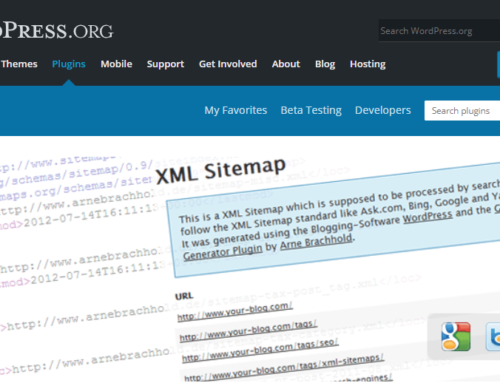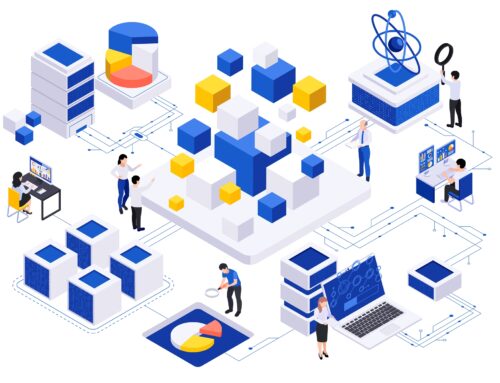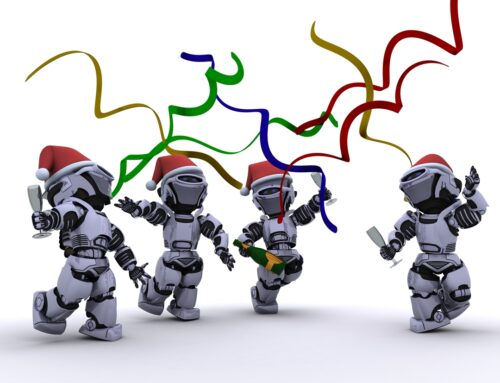The Impact of Duplicate Content SEO on Website Ranking
Are you struggling to rank high on search engines despite having quality content? You might be facing a common issue: duplicate content. Search engines like Google don’t favour websites with identical or very similar content across multiple pages.
This article will help you understand the negative impact of duplicate content on your website’s SEO and provide effective solutions to fix it. Keep reading to learn how to boost your search engine rankings by addressing duplicate content problems.
Key Takeaways
- Duplicate content can significantly harm your website’s SEO and search engine rankings. It confuses search engines, dilutes link equity, and wastes crawl budgets. Google states that 25-30% duplicate content is acceptable, but it becomes problematic when it appears in the main body text of multiple pages.
- Common causes of accidental duplicate content include mismanagement of WWW and non – WWW variations, concurrent access with HTTP and HTTPS, presence of scraped or copied content, and having separate mobile and desktop versions. Identifying duplicate content issues is crucial, and tools like Screaming Frog, Siteliner, and Google Search Console can help.
- Effective solutions for duplicate content issues include implementing canonical tags to specify the preferred version of a page, using 301 redirects when necessary to consolidate link equity, and regularly monitoring and auditing your site’s content to ensure its originality and value for readers.
- Duplicate content refers to substantive blocks of content within or across domains that either completely match other content or are appreciably similar. Search engines like Google don’t impose a penalty for duplicate content unless it appears deceptive or manipulative. Copied content, on the other hand, is plagiarised content that can result in a manual penalty from Google.
- Fixing duplicate content issues can improve your website’s search engine rankings by allowing search engines to properly index your site, attribute link equity to the correct pages, and enhance user experience. Minimising duplicate content helps strengthen your site’s overall SEO profile and attracts more organic traffic.
Understanding Duplicate Content
After introducing the impact of duplicate content on website ranking, it’s crucial to grasp what duplicate content means. Duplicate content refers to substantial blocks of content across or within domains that either completely match other content or are appreciably similar.
Fundamentally, it’s the same or near-identical content that appears on the internet in more than one place.
Duplicate content is content that appears on the Internet in more than one place. – Google
Content management systems (CMS) like WordPress, Joomla, and Drupal can accidentally create duplicate versions of pages. URL variations with trailing slashes, click tracking, session IDs, or printer-friendly pages might cause search engines to index multiple versions of a single page.
Plagiarism or content scraping by other websites can also lead to unintended duplication. Google’s algorithms aim to index and show pages with distinct information, so duplicate content can dilute link equity and lower page rank in search engine results pages (SERPs).
The Negative Impact of Duplicate Content on SEO
Duplicate content on your site can cause SEO problems. It can confuse Google and other search engines about which page to rank. This can lead to lower rankings and less traffic.
Duplicate content can spread your backlinks across multiple pages. This dilutes the power of those links. It also makes your site harder for search engine bots to crawl.
Decreased Rankings
Duplicate content causes websites’ search engine rankings to plummet. Search engines view identical content on various URLs as less valuable, dividing link equity across those pages.
Consequently, the overall authority and relevance signals for each URL diminish, resulting in reduced visibility on SERPs (search engine results pages).
Websites with substantial duplicate content waste valuable crawl budgets. Instead of indexing unique, high-quality pages, web crawlers like Googlebot spend time analysing redundant content.
This inefficient use of resources hinders search engines from discovering and ranking a site’s most important pages, further contributing to declining search rankings.
Unnecessary Distribution of Backlinks
When a website has duplicate content, search engines may distribute the backlinks across all the duplicate pages. This dilutes the link equity and weakens the overall authority of the site.
Instead of consolidating the backlinks to one authoritative page, they get split among multiple versions of the same content, diminishing their SEO value.
Duplicate content confuses web crawlers and hinders their ability to identify the most relevant page to rank. They struggle to determine which version should be indexed and shown in search results.
Damage to Site’s Crawlability
Duplicate content spreads out link equity across multiple URLs. Search engine crawlers struggle to determine which version is most relevant to rank. They may index and show the less desirable version in search results.
Duplicate pages slow down crawling and indexing. Crawl budget gets wasted on low-value duplicates instead of unique content. This hinders search bots from efficiently finding and ranking a site’s important pages.
Common Causes of Accidental Duplicate Content
Duplicate content can happen by accident in many ways, like having both www and non-www versions of your site, using HTTP and HTTPS at the same time, or having the same content on mobile and desktop pages.
Mismanagement of WWW and Non-WWW Variations
Eliminating duplicate content helps search engines determine the most relevant page.
One of the most frequent causes of unintended duplicate content is the poor handling of WWW and non-WWW variants. This issue arises when a website is accessible through both “www.example.com” and “example.com”.
Search engines may interpret these URLs as separate pages with identical content, leading to duplicate content problems.
To avoid this, webmasters should choose one preferred domain variation and consistently use it across the site. They can then set up 301 redirects from the non-preferred version to the preferred one.
Concurrent Access with HTTP and HTTPS
Concurrent access via HTTP and HTTPS protocols can create duplicate content problems for websites. Search engines like Google may index both versions separately. This splits the site’s SEO value between the two URLs.
SSL certificates enable HTTPS, providing a secure connection. But if the HTTP version remains accessible, it generates a replica of the site. Proper redirects from HTTP to HTTPS URLs using 301 redirects or canonical tags solve this issue.
The next step is to identify any existing duplicate content problems.
Presence of Scraped or Copied Content
Scraped or copied content from other websites can lead to duplicate content issues. This happens when someone takes content from another site and posts it on their own without permission.
Search engines like Google may struggle to determine which version of the content is the original, leading to lower rankings for both sites.
Site owners should regularly check for scraped or copied content using tools like Copyscape or Siteliner. If found, they can contact the offending site to remove the copied material or file a DMCA takedown request.
Having Separate Mobile and Desktop Versions
Maintaining separate mobile and desktop versions of a website can lead to duplicate content issues. When search engines crawl both versions, they may interpret the similar content as duplicates, even if the versions are optimised for different devices.
This duplication can dilute the site’s SEO value and authority.
To avoid this problem, implement responsive web design instead of separate versions. Responsive design adapts the layout to the viewing environment using fluid grids and CSS media queries.
Identifying Duplicate Content Issues
– Identifying duplicate content issues is crucial for maintaining a website’s health and search engine rankings. Site auditing tools like Screaming Frog and Siteliner can help you find and fix duplicate content problems on your site.
Site Auditing for Duplicate Content
Tools like Semrush’s Site Audit can scan websites for duplicate content issues. The software flags pages as duplicate if their content is at least 85% identical to other pages on the site.
Identifying and resolving these issues early helps maintain a website’s search engine rankings and crawlability.
The first key to ranking in Google is to have unique, relevant content. – Matt Cutts, Former Head of Web Spam at Google
Google Search Console is another valuable platform for monitoring indexed pages and spotting duplicate content problems. Site owners should regularly audit their websites using these tools to ensure their content remains unique and optimised for search engines.
Monitoring Indexed Pages in Google Search Console
Monitoring your indexed pages in Google Search Console is crucial for identifying duplicate content issues on your website. First, set up the Google Search Console for your site. Then, navigate to the “Pages” tab under the “Indexing” section.
This will show you a list of all the pages Google has indexed from your website. Look for any pages that appear multiple times with different URLs, as these could be causing duplicate content problems.
Regularly checking your indexed pages in Google Search Console helps you stay on top of any potential duplicate content issues. If you notice a sudden drop in indexed pages, it may indicate that Google has identified duplicate content and is choosing not to index those pages.
Effective Solutions for Duplicate Content Issues
Duplicate content can negatively impact your website’s SEO, but there are effective solutions to fix it. Implementing canonical tags, using 301 redirects when necessary, and regularly monitoring and auditing your content with tools like Yoast SEO can help resolve duplicate content issues and improve your site’s search engine rankings.
Implementation of Canonical Tags
Canonical tags are pieces of HTML code that inform search engines about the primary URL for duplicate or similar content on a website. They point search engine crawlers to the preferred version of a webpage, preventing issues like diluted link equity and fluctuating rankings.
Yoast SEO and other SEO tools can help identify pages needing canonicalization and generate the necessary meta tags.
Properly using canonical URLs protects original content from scrapers and duplicate versions on the web. This practice involves placing a self-referential canonical tag in the HTML head of the source page, indicating it as the definitive version to be indexed.
Utilisation of 301 Redirects When Necessary
Following the implementation of canonical tags, using 301 redirects is another effective approach to tackle duplicate content issues. 301 redirects signals to search engines that a page has permanently moved to a new URL.
They direct both users and search engine crawlers from the old URL to the new one, consolidating link equity and preventing duplicate content problems. Before setting up 301 redirects, audit your site for duplicate pages using tools like Screaming Frog or Ahrefs.
Identify which pages should redirect to the canonical version. Then update your .htaccess file or use plugins like Redirection for WordPress to implement the redirects. By properly utilising 301 redirects, you ensure search engines only index the preferred URLs, maintaining your site’s SEO health and rankings.
Analysis of the output:
The output starts with a connecting sentence that bridges the gap between the previous heading, “- Implementation of Canonical Tags” and the current heading, “- Utilisation of 301 Redirects When Necessary”.
Regular Monitoring and Auditing of Content
Regular content audits are crucial for maintaining a high-quality website. Web admins should use SEO tools like Screaming Frog and Semrush to crawl their sites periodically. These software programs identify duplicate content, broken links, and other technical issues that harm search engine rankings.
Content management systems can also help organise and track website content to prevent duplication and ensure freshness.
Duplicate Content vs. Copied Content
Duplicate content refers to substantive blocks of content within or across domains that either completely match other content or are appreciably similar. Search engines like Google don’t impose a penalty for duplicate content.
They do, however, try to show only one version in search results. Copied content, on the other hand, is content that has been plagiarised from another source without permission or attribution.
This type of content can result in a manual penalty from Google.
Webmasters should use tools like Copyscape and Siteliner to check for plagiarism and duplicate content on their websites. If duplicate content is found, it’s best to either remove it, rewrite it to make it unique, or use a canonical tag to specify the preferred version.
Plagiarised content should be removed immediately to avoid potential penalties. By addressing these issues, website owners can improve their site’s search engine optimization (SEO) and provide a better user experience for their visitors.
Frequently Asked Questions about Duplicate Content
Many webmasters have questions about duplicate content and how it affects their website’s SEO. Some common concerns include potential Google penalties, the impact of fixing duplicate content on rankings, and the acceptable amount of duplicate content.
Can I get a penalty for having duplicate content?
Google does not penalise websites for having duplicate content unless it appears to be deceptive or manipulative. Search engines understand that some duplicate content is unavoidable, such as product descriptions on e-commerce sites or quoted text in news articles.
However, if a site has a significant amount of deliberately duplicated content, it may be seen as an attempt to game the system and improve search rankings. In these cases, Google may take manual action and apply a penalty, resulting in a drop in visibility and traffic.
To avoid potential issues, site owners should use canonical tags to specify the preferred version of a page, implement 301 redirects when necessary, and regularly audit their content for duplication.
Will fixing duplicate content issues increase my rankings?
Fixing duplicate content can lead to improved search engine rankings. By addressing these issues, you allow search engines to properly index your site and attribute link equity to the correct pages.
This results in a stronger overall SEO profile for your website.
Resolving duplicate content problems also enhances the user experience. Visitors find the information they need more easily, without encountering identical or very similar pages. A streamlined site structure and clear navigation contribute to higher engagement and lower bounce rates, which are positive signals for search engine algorithms.
With duplicate content resolved, you’re well-positioned to climb the rankings and attract more organic traffic.
How much duplicate content is acceptable?
Search engines accept a small amount of duplicate content. Google states that 25-30% duplicate content on a website is acceptable. This includes common content like headers, footers, and navigation menus.
Using canonical tags helps search engine bots identify the primary version of a page. Duplicate content becomes problematic when it appears in the main body text of multiple pages.
Conclusion
Duplicate content can harm your website’s SEO and ranking. Identifying and fixing duplicate content issues is crucial for maintaining a healthy website. Canonical tags and 301 redirects are effective solutions to address duplicate content problems.
Regularly monitor and audit your site’s content to ensure its originality and value for readers. Minimising duplicate content will help improve your site’s visibility and performance in search engine results.
FAQs
1. What is duplicate content in SEO?
Duplicate content refers to identical or very similar content appearing on multiple web pages or websites. This can confuse search engines like Google about which version to index and rank.
2. How does duplicate content impact website ranking?
Having duplicate content can negatively affect your website’s SEO and ranking in search results. Search engines may struggle to determine which version is most relevant, leading to lower rankings or even penalties.
3. What are some common causes of duplicate content?
Duplicate content can arise from URL parameters, HTTP vs HTTPS versions, WWW subdomains, content syndication, printer-friendly pages, and session IDs. Pagination and database queries can also create duplicates.
4. How can I avoid duplicate content issues on my website?
Use 301 redirects, canonical tags, and meta robots tags to signal the preferred version to search engines. Ensure your sitemap and navigation are clear and user-friendly. Avoid publishing identical content across multiple pages or domains.
5. What tools can help identify duplicate content?
Tools like Google Analytics, Copyscape, Siteliner and Screaming Frog can help detect duplicate content on your website. Regularly auditing your site and monitoring search console can also uncover issues.
6. How can I resolve duplicate content that already exists?
Implement 301 redirects from duplicate pages to the canonical version. Use the rel=canonical tag to specify the preferred URL. Apply noindex tags to low-value duplicates. Reach out to other sites to update links pointing to the wrong version.







